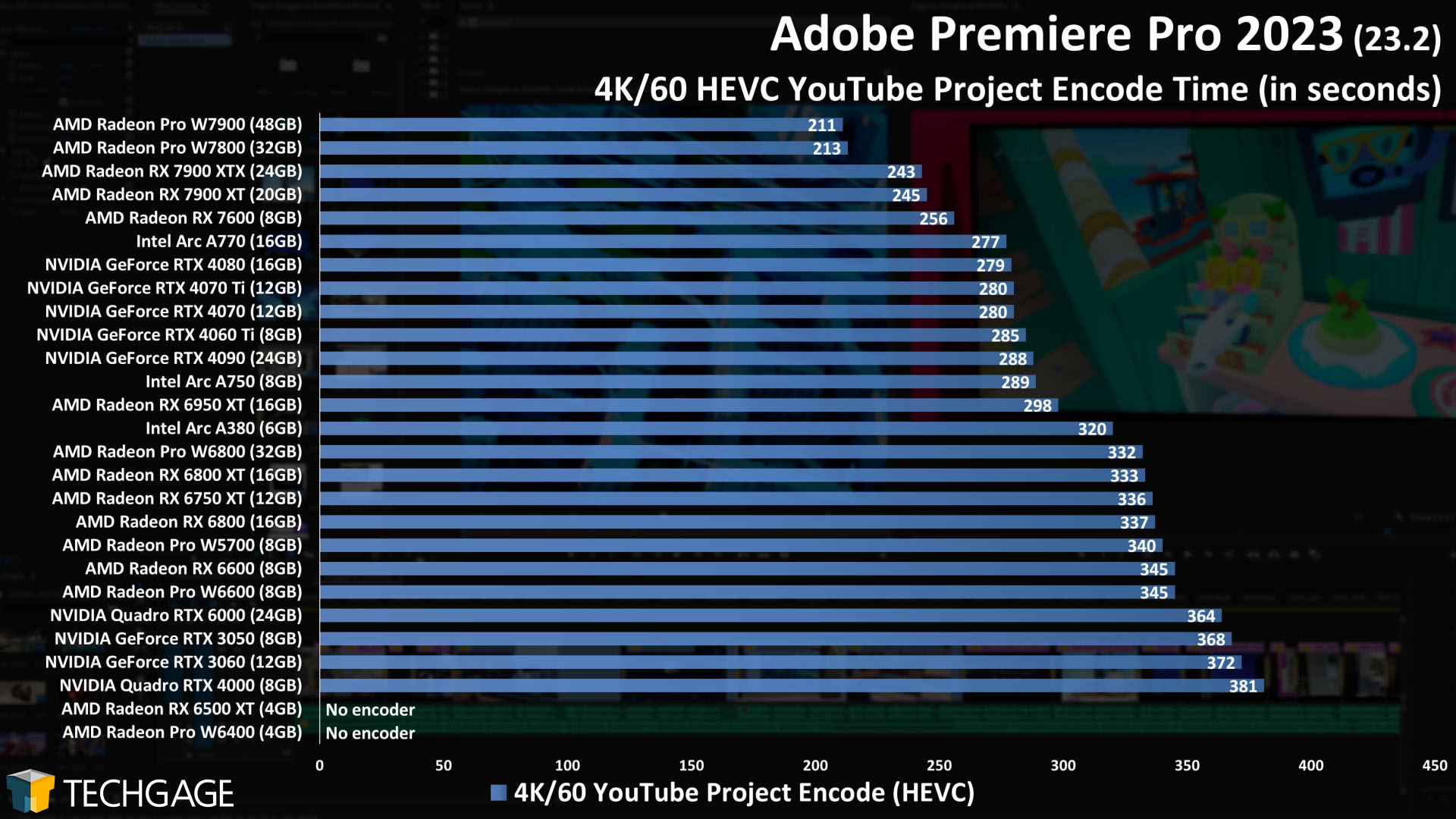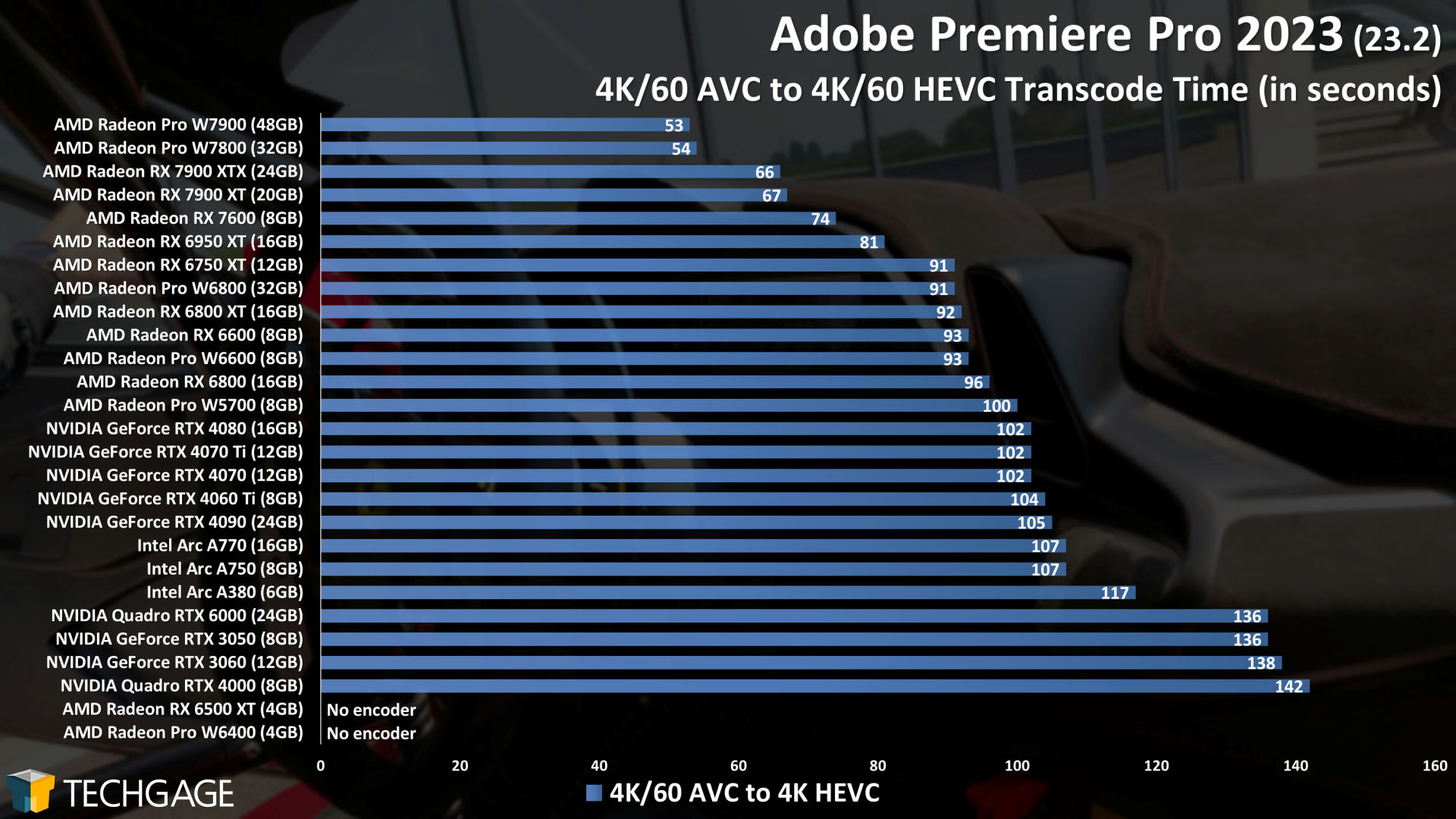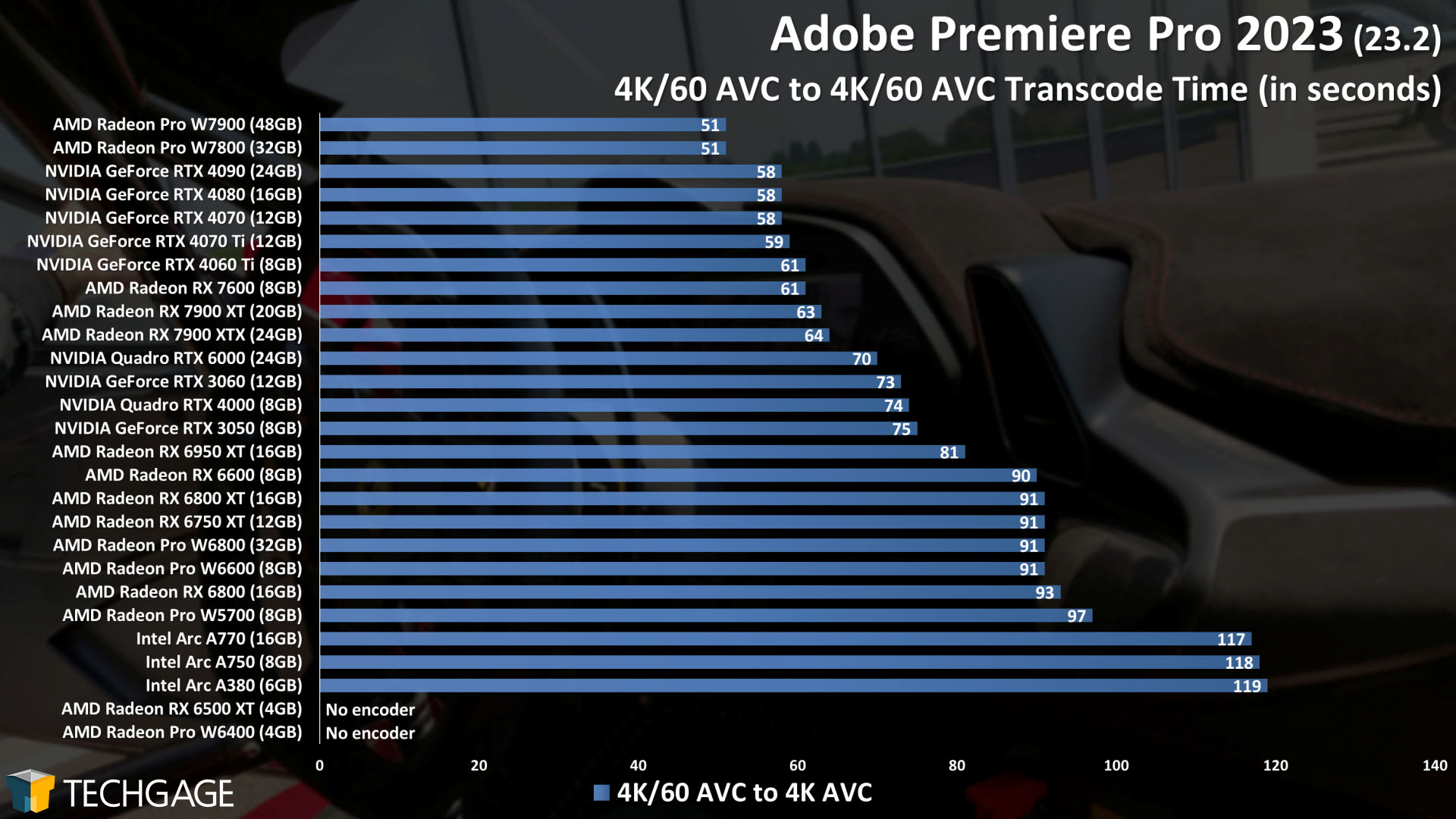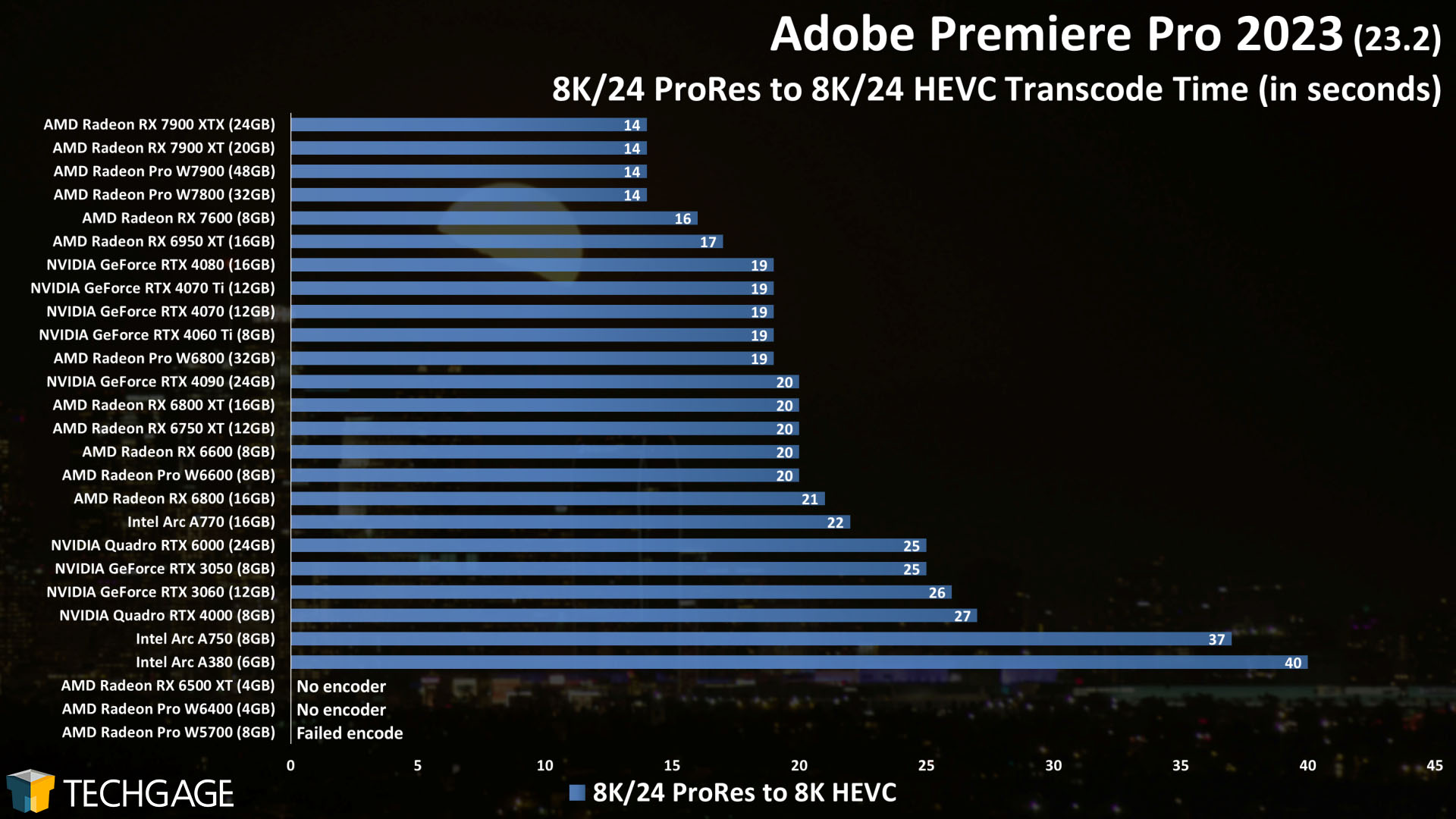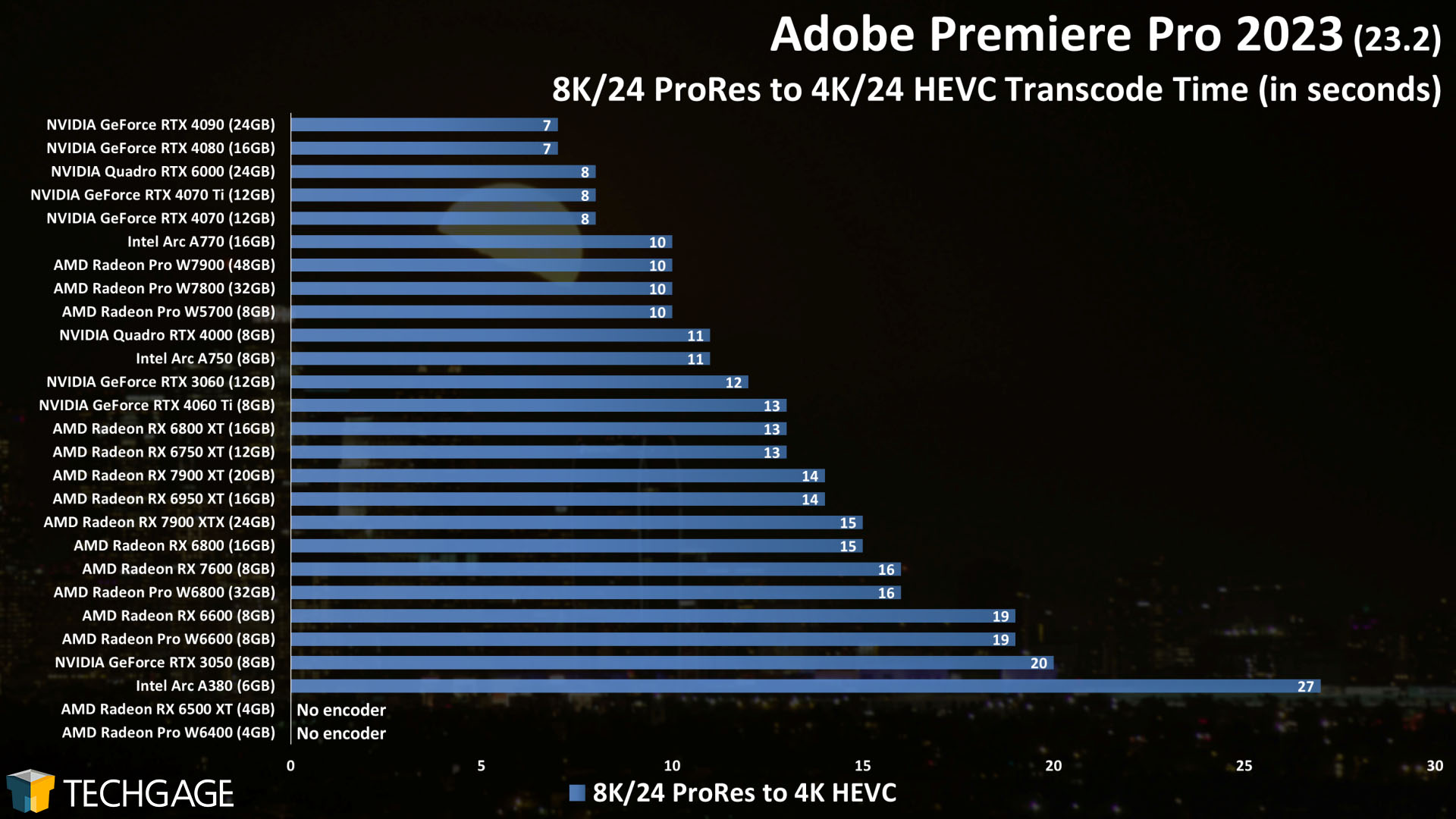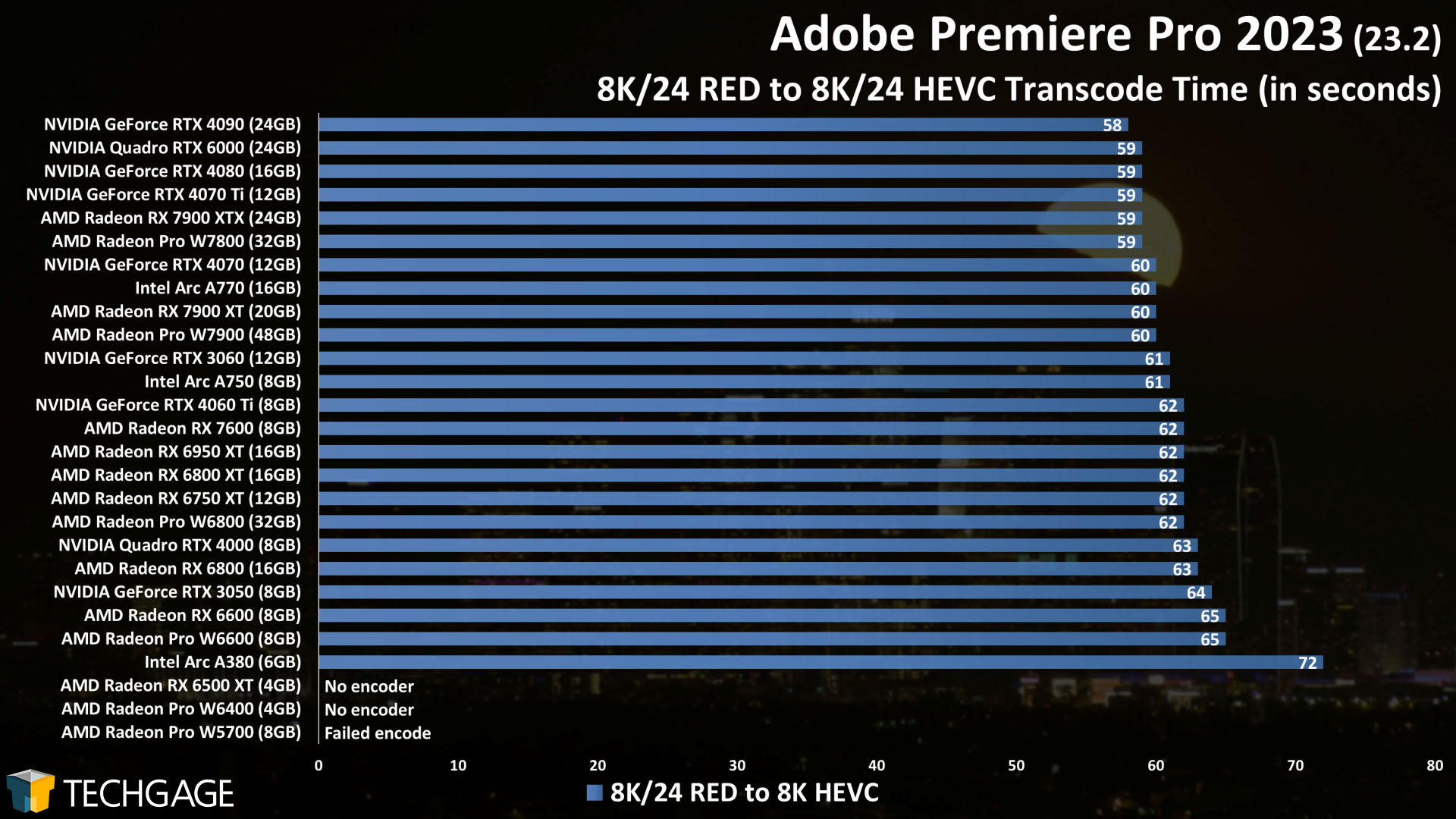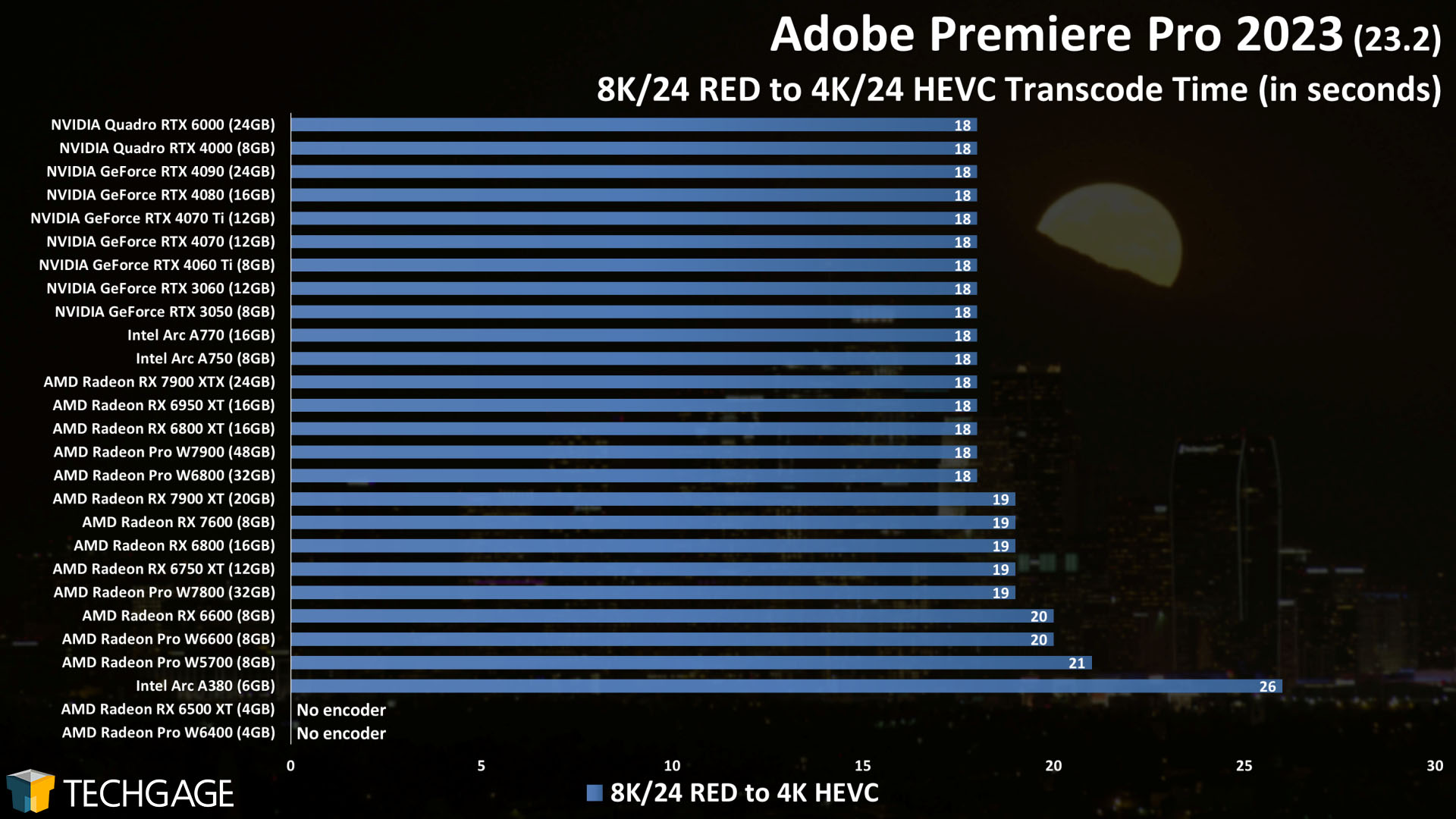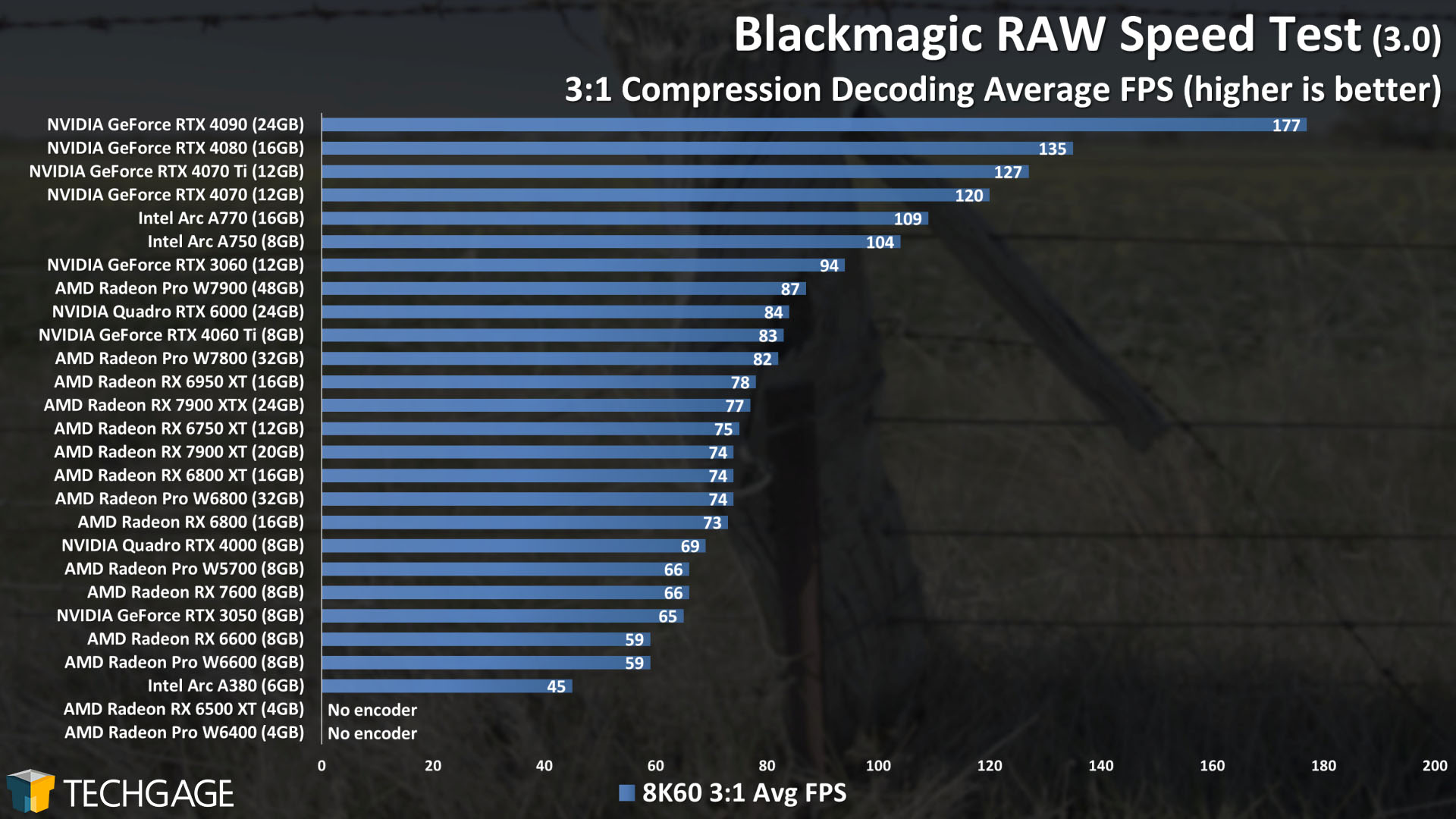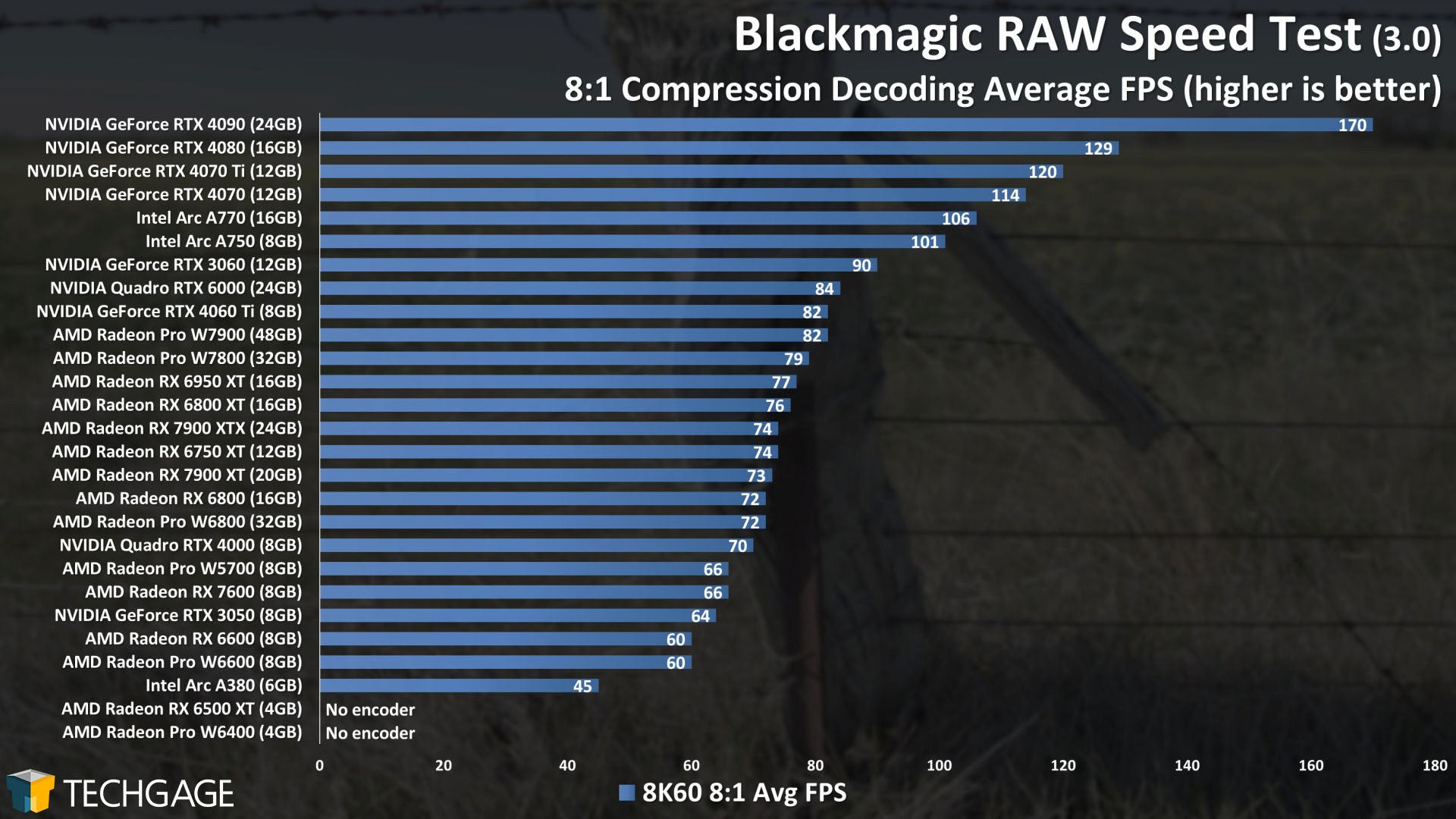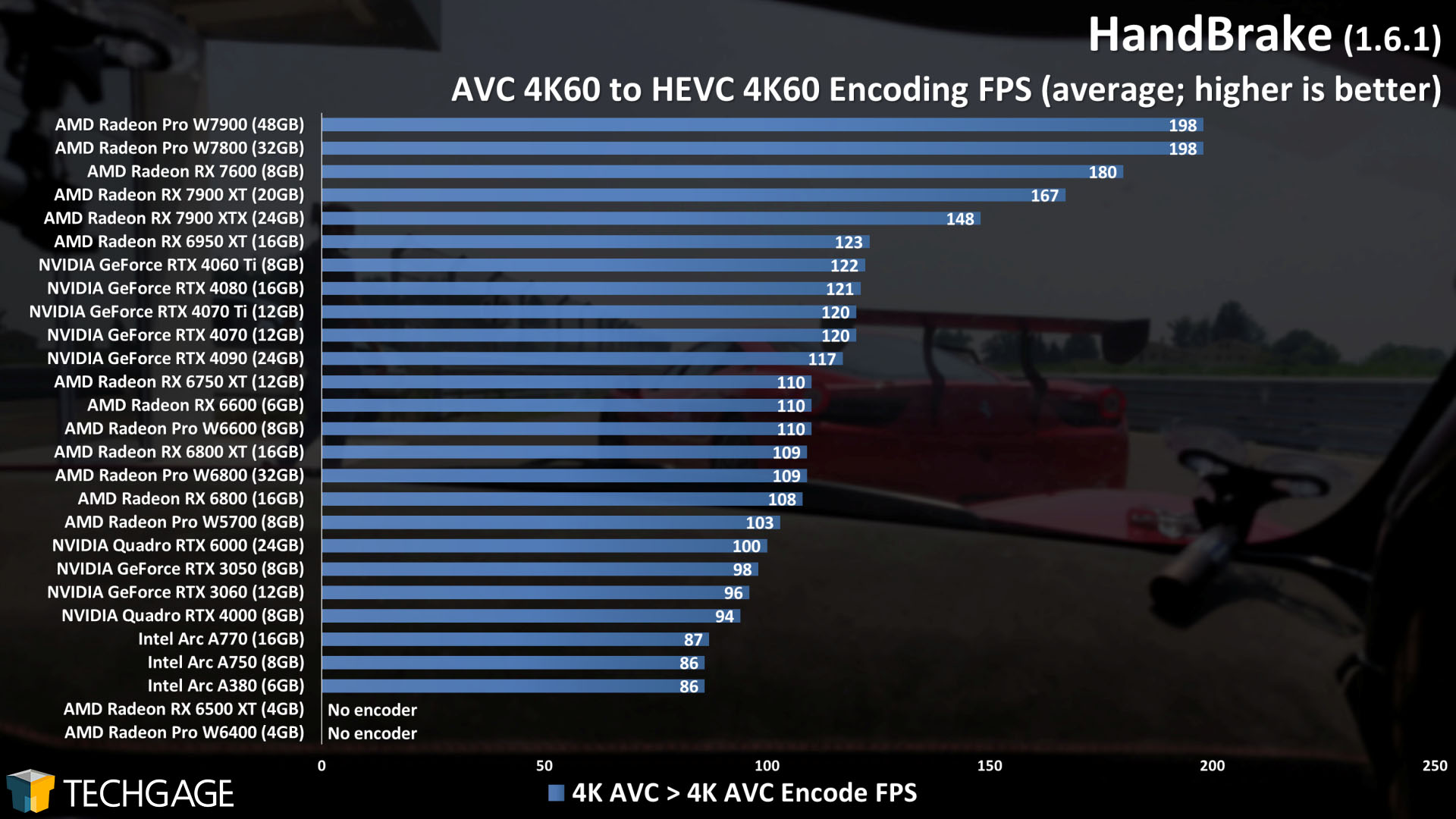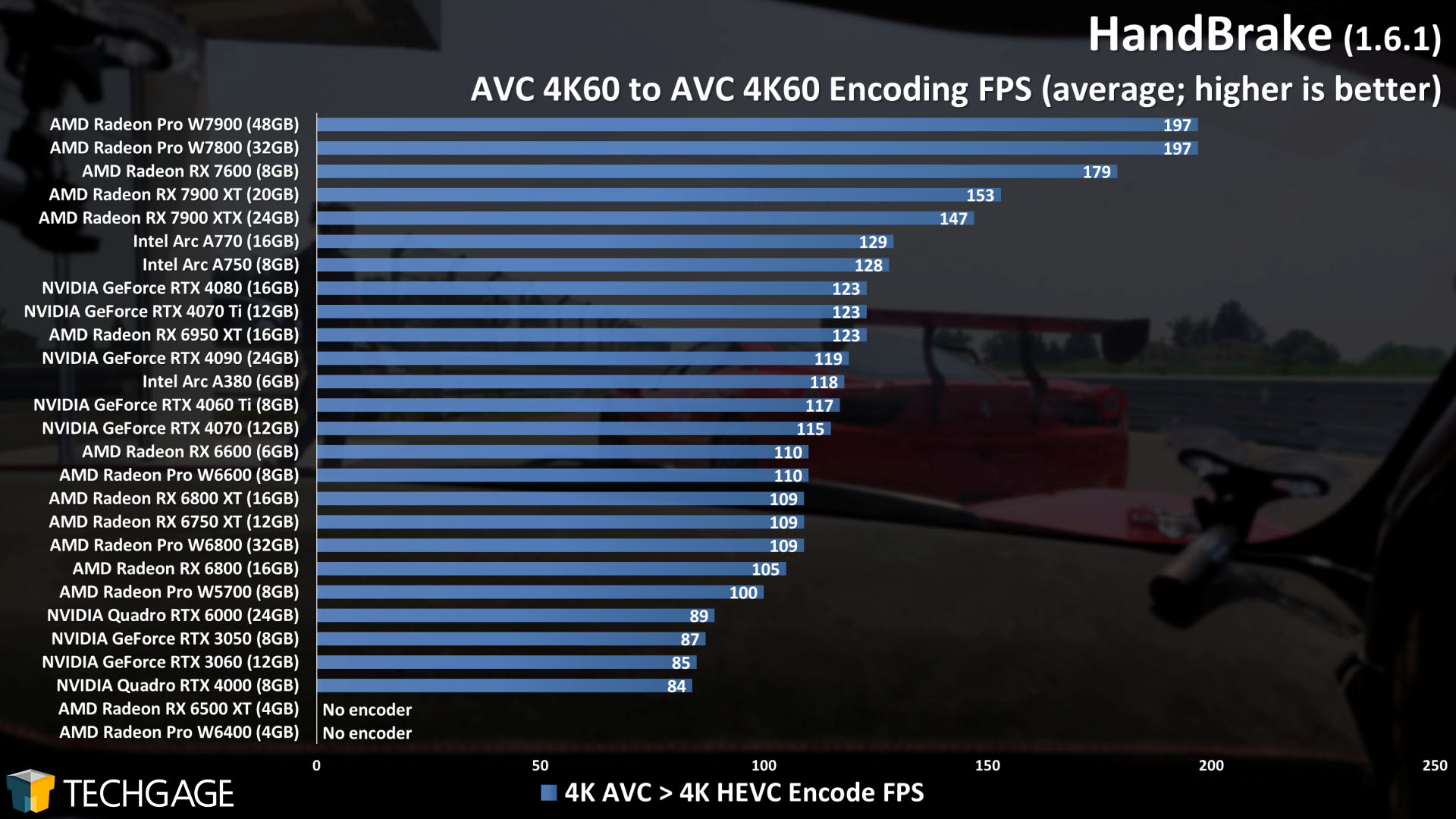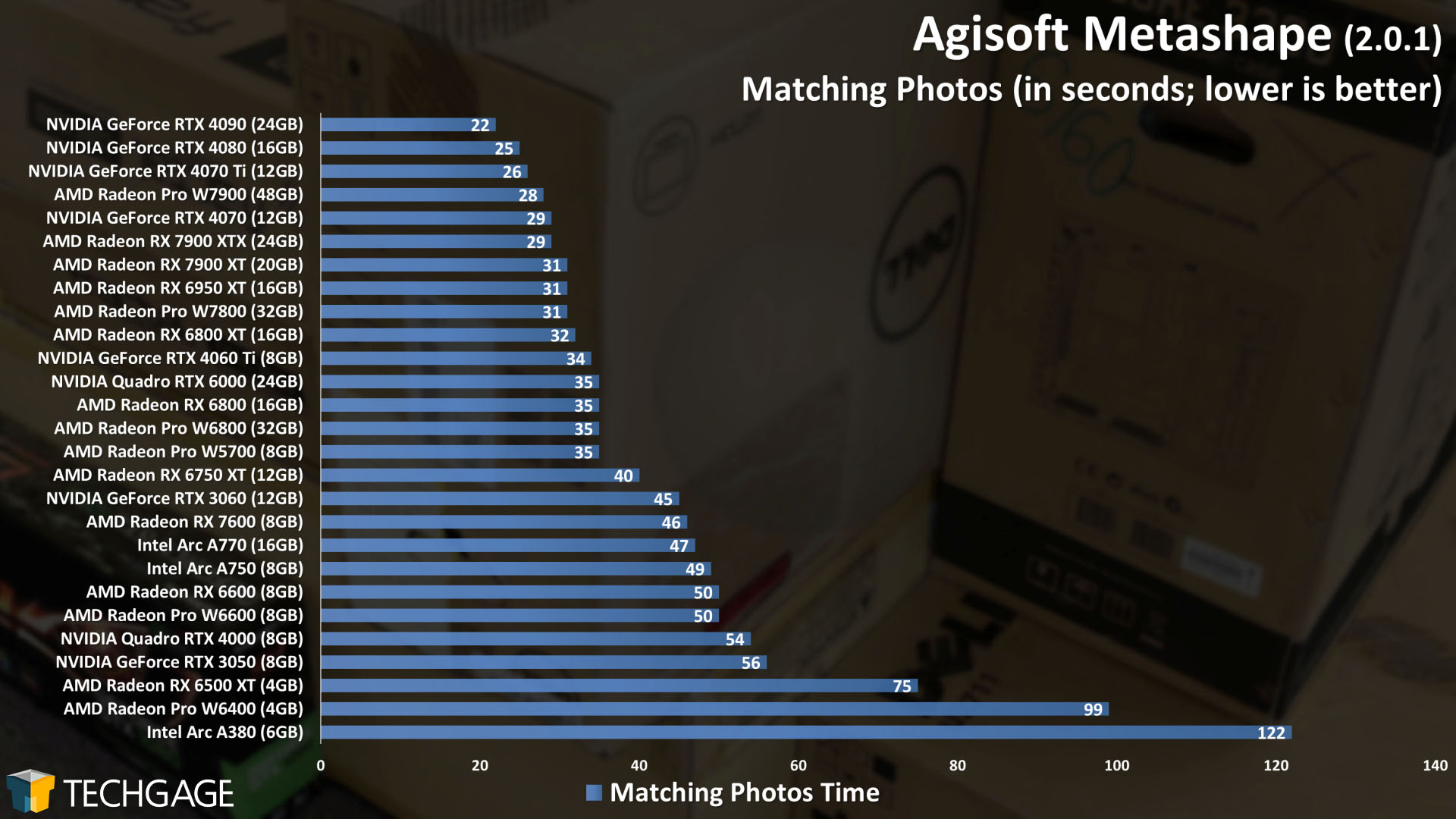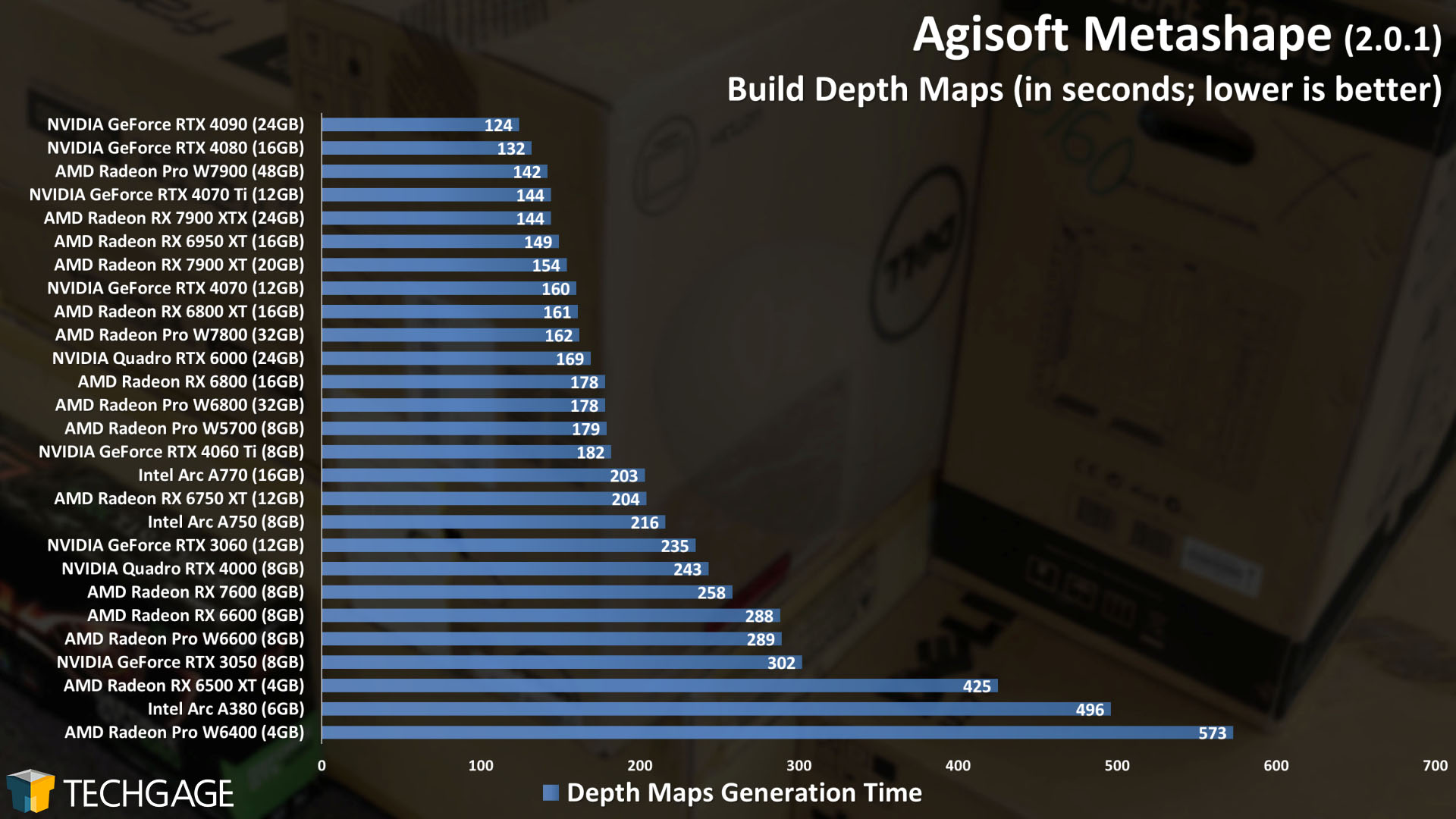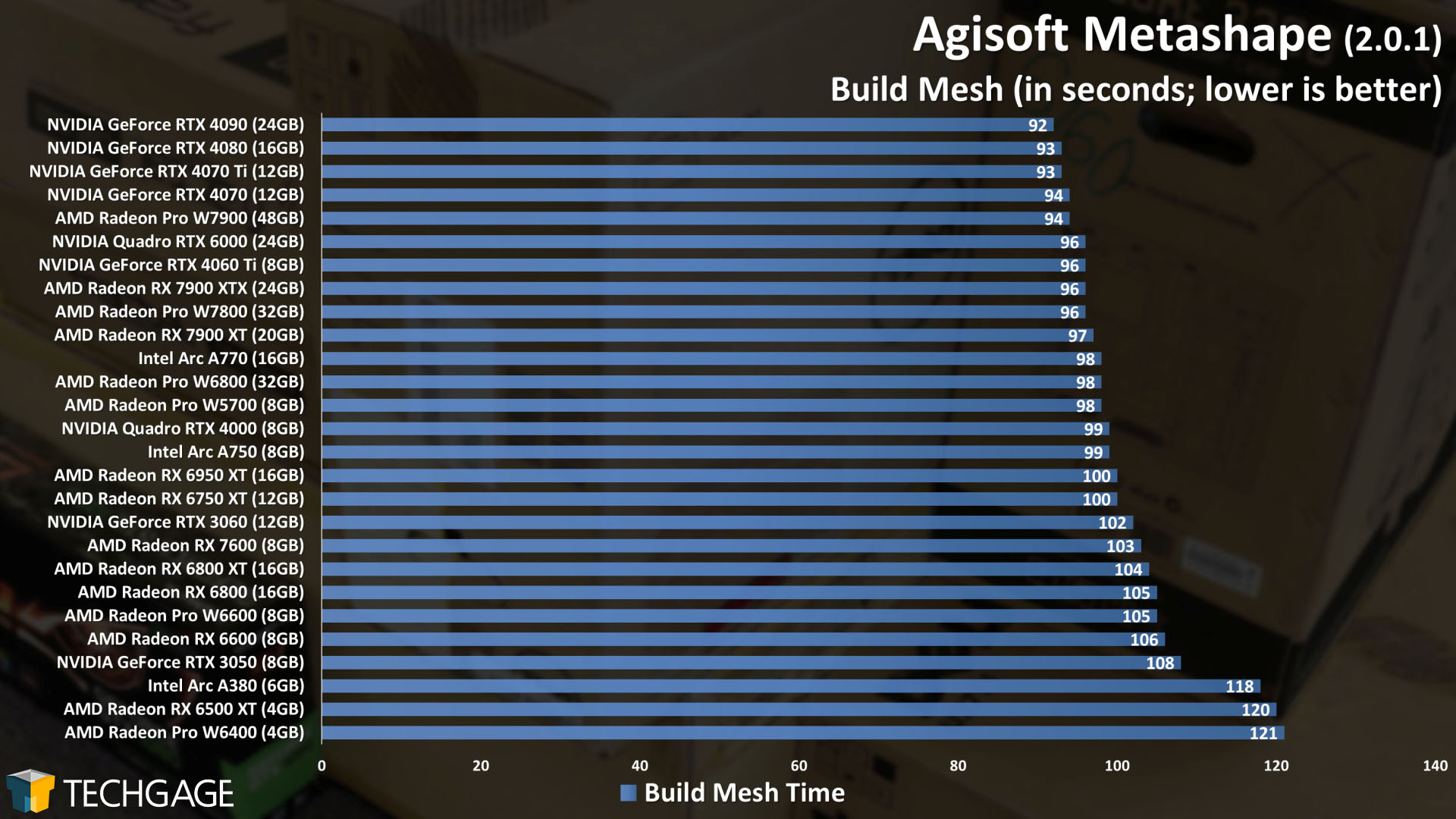- Qualcomm Launches Snapdragon 4 Gen 2 Mobile Platform
- AMD Launches Ryzen PRO 7000 Series Mobile & Desktop Platform
- Intel Launches Sleek Single-Slot Arc Pro A60 Workstation Graphics Card
- NVIDIA Announces Latest Ada Lovelace Additions: GeForce RTX 4060 Ti & RTX 4060
- Maxon Redshift With AMD Radeon GPU Rendering Support Now Available
AMD Radeon PRO W7800 & W7900 Workstation Performance Review
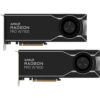
AMD’s Radeon PRO series of workstation GPUs has just been augmented with the first models infused with the company’s RDNA3 architecture. We’re taking a look at the high-end 32GB Radeon PRO W7800, as well as the even higher-end 48GB Radeon PRO W7900, across a wide-range of production workloads.
Page 3 – Premiere Pro, BRAW, HandBrake & Metashape Performance
As mentioned in the intro, AMD’s RDNA3-based Radeon PROs include an updated video encode accelerator, which not just adds in AV1 encode support, but also improves performance. AMD’s dual media engine allows two encode/decode streams at once, which is admittedly a focused test we need to add to the to-do list for future exploration.
Unfortunately, AV1 encode support on the software side has been slow to ramp up, with none of the typical solutions we test with including it. The closest we get is AV1 encode support in HandBrake, but only for Intel GPUs. The one solution all three GPU vendors have talked about is Voukoder, which can plug into common video editors, like Premiere Pro and VEGAS Pro. We’re currently in the midst of revamping our encoding benchmarks, and intend to get AV1 tested soon.
Adobe Premiere Pro
Well, AMD has sure made our job easy with these results. Both of the new Radeon PROs sit at the top, in some cases a good distance ahead of the runners-up. In the HEVC transcode test, the W6800 encoded the file in 96 seconds, whereas the W7800 did it in 54 seconds. Those are some nice gains.
Most of the following results lack interesting scaling, but are included to highlight the fact that GPUs in the same series should encode a video in roughly the same amount of time – assuming the framebuffer isn’t being exhausted.
Depending not just on the format, but the resolution, scaling between the vendors changes up in an unpredictable way (unless you’re already aware of their strengths, of course). In both RED and ProRes’s cases, transcoding 8K to 8K is much more demanding than downscaling it to 4K, especially on the RED side, since it appears to be CPU-bound.
Blackmagic Design BRAW Speed Test
Blackmagic’s DaVinci Resolve is a major target of all three GPU vendors, with the name popping up one launch after another. We hate to not have a custom test prepared at the moment, but this BRAW Speed Test benchmark does provide insight into what to expect.
Note that this benchmark tests the decode, not encode, so the higher the FPS, the smoother the playback inside of Resolve is expected to be. This is one test where AMD lags behind the others, and Intel delivers unexpectedly strong results for the performance class of those GPUs.
HandBrake
AMD’s decode performance lagged behind in the previous test, but HandBrake joins Premiere Pro in highlighting the fact that RDNA3-based GPUs are fast encoders. We’re not sure why the RX 7600 outperforms the higher-end RX 7900 GPUs, but the result is repeatable with our particular source material.
Agisoft Metashape
In Metashape’s workflow, there are multiple tasks that need to be done, and each one of those tasks can utilize the available hardware differently. Both the Match Photos and Depth Maps use the CPU and GPU together, but with an emphasis on the latter. The Build Mesh process relies more on the CPU, and it shows.
AMD’s newest Radeon PROs perform well in these tests, but NVIDIA’s Ada Lovelace generation has a slight edge.
With video encoding and photogrammetry taken care of, we’re going to tackle rendering and conclusions on the next page.
Support our efforts! With ad revenue at an all-time low for written websites, we're relying more than ever on reader support to help us continue putting so much effort into this type of content. You can support us by becoming a Patron, or by using our Amazon shopping affiliate links listed through our articles. Thanks for your support!




